About the Ranking
Tea is deeply woven into the history and culture of China. The beverage is considered one of the seven necessities of Chinese life, so if you want to feel Chinese life, never forget the following famous places for Chinese tea tasting.
-
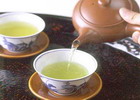
Longjing Tea is one of China's best teas and is one reason for Hangzhou's international fame. Reputed to be the "Empress of Green Tea," Longjing tea is primarily planted in Longjing (Dragon Well), a small village 20 kilometers from downtown Hangzhou. Dragon Well is most famous for its unique fragrance and flavor; flat, slender strips of tea leaves in bright green liquid.
-

Known as one of the top ten teas in China, Biluochun tea is mainly produced in Dongting Mountain of Taihu Lake in Wuxian County of Suzhou, Jiangsu Province. It is characterized by its tightly rolled shape, slender leaves, soft green color, refreshing fragrance, thirst-quenching effect, clear and jade green liquor, evenly-distributed leaves and a sweet aftertaste.
-
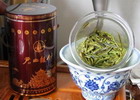
Not quite a white tea, Jun Mountain Silver Needles or Jun Shan Yin Zhen is a hearty yellow tea from the Hunan Province. The flavor is slightly nutty with hints of sweetness and a subtle woody, smoky twist. Leaves can be steeped up to three times!
-
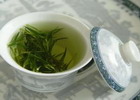
Cloud Mist tea is one of the ten famous Chinese teas, which from Jiangxi province, home of the Lu Mountains. Its distinctive characteristics are immediately apparent: elegantly twisted silver buds and small, delicate jade green leaves present a hearty, sweet aroma and an utterly unique and subtly textured flavor, that's both savory and almost sugary in its sweetness, with a long, distinctively nutty finish.
-
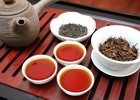
Keemun is a black Chinese tea with a wine and fruit taste, designated as a China Famous Tea. Keemun is produced in the Qimen County of Huangshan City, in Anhui province. It is a black Chinese tea with a winey and fruity taste, designated as a China Famous Tea. The excellent Keemun tea quickly gained popularity in England, and became the most prominent ingredient of the English breakfast tea blend.
-
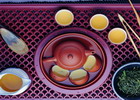
Huangshan maofeng tea, produced in Huangshan County in Anhui Province is one of China's top 10 teas with excellent aroma of orchids, charm profound. Since the new system of white tea with the Fine-fuzz, tea showed a sharp peak-Mans, and the fresh leaves collected from the peak of Huangshan Mountain, then the tea named "Huangshan Maofeng Tea".
-
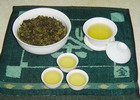
Iron Goddess Tea is comprised of carefully hand-selected high quality Wu-Long tea leaves grown in the Fu Jian Province. The leaves are tightly wrapped and unfurl to reveal large leaves with a fragrant, smooth, and slightly nutty flavor. To reach optimum flavor, before brewing, rinse oolong leaves for 10-20 seconds and watch the large, tightly wrapped leaves unfurl.
-
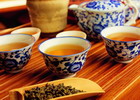
Pu’er Tea is a large leafed tea from the Yunnan province in China and has been famous as a medicinal tea. The leaves go through two types of fermentation, which gives this tea its unique characteristics---a mild, but distinctively earthy flavour. Pu’er teas are much like fine wines, which become smoother and more balanced with age.
-
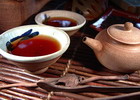
Taiwan’s most famous tea is Dongding Oolong, which comes form the rolling foothills of Taiwan’s central mountain range. These humid peaks are often covered in cloud and mist. Tea needs this cool climate, if the weather is hot; the tealeaves grow too fast, and famous for their mildness, and Dongding Oolong is no exception. It is gentle and refreshing, with a hint of springtime.
-
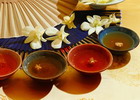
The Jasmine Tea in Suzhou is the best in the Chinese Jasmine Tea. It has a long history of 250 years in production and marketing.Jasmine tea is honored as the most fragrant and popular scented Chinese tea in the world. This tea is light, delicate, and slightly sweet and every cup comes with a distinctive fresh jasmine fragrance. The strong flowery aroma of this tea is very soothing.